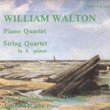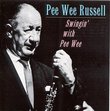3 1/2 stars for verve, projection, excitement & a few odditi
Larry VanDeSande | Mason, Michigan United States | 09/07/2006
(3 out of 5 stars)
"Jos von Immerseel -- who performs these concertos on a period fortepiano copy from the period of Beethoven's compositions and one the composer was thought to enjoy -- must now qualify among the heavyweights in the period performance practice crowd. Not only has Immerseel recorded performances like these, his work with Anner Bylsma and Vera Beths expanded our understanding of the tents of period performances and the way they can be applied to romantic chamber music.
Immerseel's resume includes a recording, using a period instrument, as accompanist to Max von Egmond's performance of Schubert's "Winterreise" song cycle. Finally, he established the period orchestra Anima Eterna that recorded the first period renditions of romantic chestnuts including the Tchaikovsky Symphony No. 4 and the Schubert Symphony No. 5. Immerseel and Anima Eterna recently released a CD of Ravel's "Bolero" and other famous music on period instruments. He recently recorded the entire Mozart piano concerto oeuvre with Anima Eterna, also.
His work in this recording is what both makes the performances special and casts asperisions on them. Immerseel is ably assisted by wonderful period playing by Tafelmusik under the baton of Bruno Weil. The orchestra's work is always top notch with good playing and never less than acceptable period sound. While the strings may occasionally scrape, the woodwinds are always lovely and invigorating. Weil is consistenly in sync with the emotions of the score, producing leonine accompaniment in Concerto 1 and Mozartean accompaniment in Concerto 2.
Immerseel's instrument, a Hammerflugel modeled after one by Anton Walter, produces a pleasing sonority than can be narrow in quieter moments. Indeed, some critics were riled by this tendency toward quietude when the recording was first released in 1996. I found no distraction or unpleasant listening when the piano got quiet or thin; I always enjoyed the sound of this instrument, in fact, and prefer it to most period keyboards I hear in this kind of work.
A couple things did bother me about Immerseel's playing, however. First, his initial entry to both concertos is reticent and too reserved. This is especially true in the Concerto No. 1, the more outgoing, romantic and forward looking of the pair. After Weil's boisterous opening statement, Immerseel enters as if saying, "Whoa big boy, slow down!" He picks it up soon after and, for the rest of the score, it's clear sailing, straight ahead Beethoven.
This is not the first time I've encountered this oddity. In one of the most famous of all recordings of the Op. 15 concerto -- by Sviatoslav Richter, Charles Munch and the Boston Symphony on RCA -- the same thing occurs: Munch leads the intial tutti in a high octane romanticized statement only to have Richter's entry seem the model of reserve and delicacy. I've never read a critical review that pointed this out although almost every review of this recording pointed to Immerseel's entries as shortcomings.
What is hardest to reconcile in this recording, especially on first hearing, are Immerseel's cadenzas, most notably the cadenzas in the opening and closing movements of the Concerto No. 1. I am sure you've never heard anything like them. The keyboardist makes his case in his notes saying during Beethoven's time: "The art of improvisation...ran according to certain gorund rules and was, for example, put into practice in the cadenzas of a concerto.
"Although it is well-known that Beethoven improvised his own cadenzas, its would make little sense for a performerm today to try to imitate him. Rather, the soloist should have the opportunity, at the end of the work, to add to the overall excitement by making a personal contribution of his own."
And, thus, Immerseel does exactly that in both concertos, not only in the finales but in the first movements as well. His cadenza at the end of Concerto No. 1 goes on for what, upon first hearing, seems like an interminable 1 minute and 40 seconds.
The nautre of his intercessions are such that Immerseel fundamentally changes the outcome of a concerto most collectors and musicians been ingesting since our early years. Does this work? Most people probably aren't going to be convinced on first hearing and some won't be convinced on any hearing. Most older listeners will probably think Beethoven, who comes as close to being cast in marble as any artist in history, simply can't be amended this way.
My initial reaction to the bizarre cadenza that ends the first concerto was reminiscent of what a reviewer once wrote about Kennedy's cadenza in the Brahms Violin Concerto: the critic said Kennedy played beautifully but "disfigured" the concerto by inserting his own cadenza. I didn't believe that about the Brahms but I may have thought that the first time I heard this recording.
It didn't seem so bad the second time, of course. And it is not enough to cancel all the other good things going on in this recording including its magnificent, clear and resonant sound where all the instruments can be identified. This pair also recorded the Concertos Nos. 3 and 4 on another recording, apparenlty using a different instrument. I haven't heard that one but probably will after fully digesting the advocacy of this one."


 Track Listings (6) - Disc #1
Track Listings (6) - Disc #1

